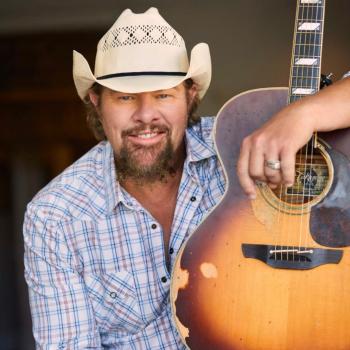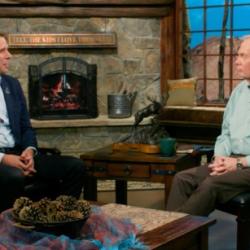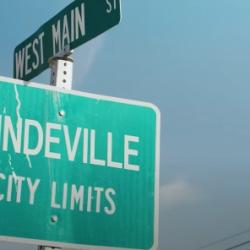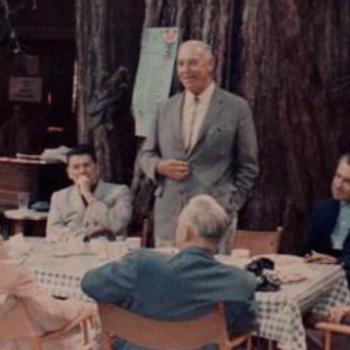I believe that there are programs like that, programs like education and others, that should be turned back to the states and the local communities with the tax sources to fund them, and let the people [applause drowns out end of statement].
I believe in state’s rights; I believe in people doing as much as they can for themselves at the community level and at the private level. And I believe that we’ve distorted the balance of our government today by giving powers that were never intended in the Constitution to that federal establishment. And if I do get the job I’m looking for, I’m going to devote myself to trying to reorder those priorities and to restore to the states and local communities those functions which properly belong there.
Ronald Reagan kicked off his campaign for president in 1980 with a speech at the Neshoba County Fair near Philadelphia, Mississippi. It was his first public speech since his nomination at the Republican Convention.
And, like the speech he gave at that convention accepting his nomination, it never mentioned abortion.
It was, instead, about “state’s rights.” And no, the choice to give this speech near Philadelphia, Miss., was not a coincidence.
This was seven years after Roe v. Wade, and no huge backlash against that decision could be detected in Reagan’s campaign or in the groundswell of white evangelical support bolstering his run for the White House. You can’t find a hint of that in either speech and you won’t find much more than a hint of that in the 1980 election.
If evangelicals recoiled in moral horror after Roe v. Wade, as Al Mohler asserts, they did so very quietly and almost imperceptibly throughout the 1970s.
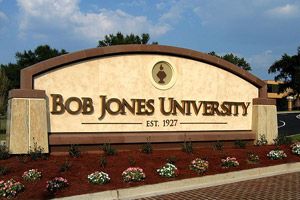 White evangelicals certainly were upset with the U.S. Supreme Court in those years, and Roe fit broadly into the pattern of the decisions about which white evangelicals were angry. But that anger wasn’t about abortion at all. That anger was about — to borrow Reagan’s preferred euphemism — “state’s rights.” It was about the belief that “that we’ve distorted the balance of our government today by giving powers that were never intended in the Constitution to that federal establishment.”
White evangelicals certainly were upset with the U.S. Supreme Court in those years, and Roe fit broadly into the pattern of the decisions about which white evangelicals were angry. But that anger wasn’t about abortion at all. That anger was about — to borrow Reagan’s preferred euphemism — “state’s rights.” It was about the belief that “that we’ve distorted the balance of our government today by giving powers that were never intended in the Constitution to that federal establishment.”
It was about white evangelicals’ desire to run tax-exempt private schools without federal interference.
Roe was a scarcely noticed footnote to the list of Supreme Court decisions that white evangelicals believed had, in Reagan’s words “distorted the balance of our government,” overriding their “state’s rights” in a way that was “incompatible with the sovereignty of the States, and of the Constitution itself.”
Mohler’s column reiterates what religious historian Randall Balmer calls “the abortion myth” — the creation story of the Religious Right:
Roe was the catalyst for the moral revolution within evangelicalism. The reality of abortion on demand and exposure to the logic of the abortion rights movement led to a fundamental shift in the evangelical conscience.
No it wasn’t. No it didn’t.
Look, we’re not talking about competing interpretations of ancient history. We’re talking about the 1970s. Mohler is 53 years old. He was there. The Bicentennial, Disco, Star Wars, Mr. October, Fonzie on water skis. He’s old enough to remember all of those things, and so he’s old enough to remember that the big flip-flop on legal abortion he calls “a fundamental shift in the evangelical conscience” came after the political realignment of “state’s rights” evangelicals, not before it.
I argue that white evangelicals’ reversal on abortion politics is a consequence of the political realignment that preceded it. It’s possible to disagree with that argument, but it’s not possible to argue — as Mohler does — that this reversal caused something that preceded it.
Balmer discusses the actual, rather than the mythic, origins of the religious right in his book Thy Kingdom Come, from which I’ve typed in the big excerpt below:
In the 1980s, in order to solidify the shift from divorce to abortion, the Religious Right constructed an abortion myth, one accepted by most Americans as true. Simply put, the abortion myth is this: Leaders of the Religious Right would have us believe that their movement began in direct response to the U.S. Supreme Court’s 1973 Roe v. Wade decision. Politically conservative evangelical leaders were so morally outraged by the ruling that they instantly shed their apolitical stupor in order to mobilize politically in defense of the sanctity of life. Most of these leaders did so reluctantly and at great personal sacrifice, risking the obloquy of their congregants and the contempt of liberals and “secular humanists,” who were trying their best to ruin America. But these selfless, courageous leaders of the Religious Right, inspired by the opponents of slavery in the 19th century, trudged dutifully into battle in order to defend those innocent unborn children, newly endangered by the Supreme Court’s misguided Roe decision.
It’s a compelling story, no question about it. Except for one thing: It isn’t true.
Although various Roman Catholic groups denounced the ruling, and Christianity Today complained that the Roe decision “runs counter to the moral teachings of Christianity through the ages but also to the moral sense of the American people,” the vast majority of evangelical leaders said virtually nothing about it; many of those who did comment actually applauded the decision. W. Barry Garrett of Baptist Press wrote, “Religious liberty, human equality and justice are advanced by the Supreme Court abortion decision.” Indeed, even before the Roe decision, the messengers (delegates) to the 1971 Southern Baptist Convention gathering in St. Louis, Missouri, adopted a resolution that stated, “we call upon Southern Baptists to work for legislation that will allow the possibility of abortion under such conditions as rape, incest, clear evidence of severe fetal deformity, and carefully ascertained evidence of the likelihood of damage to the emotional, mental, and physical health of the mother.” W.A. Criswell, former president of the Southern Baptist Convention and pastor of First Baptist Church in Dallas, Texas, expressed his satisfaction with the Roe v. Wade ruling. “I have always felt that it was only after a child was born and had a life separate from its mother that it became an individual person,” the redoubtable fundamentalist declared, “and it has always, therefore, seemed to me that what is best for the mother and for the future should be allowed.”
The Religious Right’s self-portrayal as mobilizing in response to the Roe decision was so pervasive among evangelicals that few questioned it. But my attendance at an unusual gathering in Washington, D.C., finally alerted me to the abortion myth. In November 1990, for reasons that I still don’t entirely understand, I was invited to attend a conference in Washington sponsored by the Ethics and Public Policy Center, a Religious Right organization (though I didn’t realize it at the time). I soon found myself in a conference room with a couple of dozen people, including Ralph Reed, then head of the Christian Coalition; Carl F.H. Henry, an evangelical theologian; Tom Minnery of Focus on the Family; Donald Wildmon, head of the American Family Association; Richard Land of the Southern Baptist Convention; and Edward G. Dobson, pastor of an evangelical church in Grand Rapids, Michigan, and formerly one of Jerry Falwell’s acolytes at Moral Majority. Paul M. Weyrich, a longtime conservative activist, head of what is now called the Free Congress Foundation, and one of the architects of the Religious Right in the late 1970s, was also there.
In the course of the sessions, Weyrich tried to make a point to his Religious Right brethren (no women attended the conference, as I recall). Let’s remember, he said animatedly, that the Religious Right did not come together in response to the Roe decision. No, Weyrich insisted, what got us going as a political movement was the attempt on the part of the Internal Revenue Service (IRS) to rescind the tax-exempt status of Bob Jones University because of its racially discriminatory policies.
Bob Jones University was one target of a broader attempt by the federal government to enforce the provisions of the Civil Rights Act of 1964. Several agencies, including the Equal Employment Opportunity Commission, had sought to penalize schools for failure to abide by antisegregation provisions. A court case in 1972, Green v. Connally, produced a ruling that any institution that practiced segregation was not, by definition, a charitable institution and, therefore, no longer qualified for tax-exempt standing.
The IRS sought to revoke the tax-exempt status of Bob Jones University in 1975 because the school’s regulations forbade interracial dating; African Americans, in fact, had been denied admission altogether until 1971, and it took another four years before unmarried African Americans were allowed to enroll. The university filed suit to retain its tax-exempt status, although that suit would not reach the Supreme Court until 1983. …
Initially, I found Weyrich’s admission jarring. He declared, in effect, that the origins of the Religious Right lay in Green v. Connally rather than Roe v. Wade. I quickly concluded, however, that his story made a great deal of sense. When I was growing up within the evangelical subculture, there was an unmistakably defensive cast to evangelicalism. I recall many presidents of colleges or Bible institutes coming through our churches to recruit students and to raise money. One of their recurrent themes was, We don’t accept federal money, so the government can’t tell us how to run our shop — whom to hire or fire or what kind of rules to live by. The IRS attempt to deny tax-exempt status to segregated private schools, then, represented an assault on the evangelical subculture, something that raised an alarm among many evangelical leaders, who mobilized against it.
For his part, Weyrich saw the evangelical discontent over the Bob Jones case as the opening he was looking for to start a new conservative movement using evangelicals as foot soldiers. Although both the Green decision of 1972 and the IRS action against Bob Jones University in 1975 predated Jimmy Carter’s presidency, Weyrich succeeded in blaming Carter for efforts to revoke the tax-exempt status of segregated Christian schools. He recruited James Dobson and Jerry Falwell to the cause, the latter of whom complained, “In some states it’s easier to open a massage parlor than to open a Christian school.”
Weyrich, whose conservative activism dates at least as far back as the Barry Goldwater campaign in 1964, had been trying for years to energize evangelical voters over school prayer, abortion, or the proposed equal rights amendment to the Constitution. “I was trying to get those people interested in those issues and I utterly failed,” he recalled in an interview in the early 1990s. “What changed their mind was Jimmy Carter’s intervention against the Christian schools, trying to deny them tax-exempt status on the basis of so-called de facto segregation.”
During the meeting in Washington, D.C., Weyrich went on to characterize the leaders of the Religious Right as reluctant to take up the abortion cause even close to a decade after the Roe ruling. … “What cause the movement to surface,” Weyrich reiterated, “was the federal government’s moves against Christian schools.” The IRS threat against segregated schools, he said, “enraged the Christian community.” That, not abortion, according to Weyrich, was what galvanized politically conservative evangelicals into the Religious Right and goaded them into action. “It was not the other things,” he said.
Ed Dobson, Falwell’s erstwhile associate, corroborated Weyrich’s account during the ensuing discussion. “The Religious New Right did not start because of a concern about abortion,” Dobson said. “I sat in the smoke-filled back room with the Moral Majority, and I frankly do not remember abortion ever being mentioned as a reason why we ought to do something.”
… The abortion myth serves as a convenient fiction because it suggests noble and altruistic motives behind the formation of the Religious Right. But it is highly disingenuous and renders absurd the argument of the leaders of the Religious Right that, in defending the rights of the unborn, they are the “new abolitionists.” The Religious Right arose as a political movement for the purpose, effectively, of defending racial discrimination at Bob Jones University and at other segregated schools. Whereas evangelical abolitionists of the 19th century sought freedom for African Americans, the Religious Right of the late 20th century organized to perpetuate racial discrimination.



